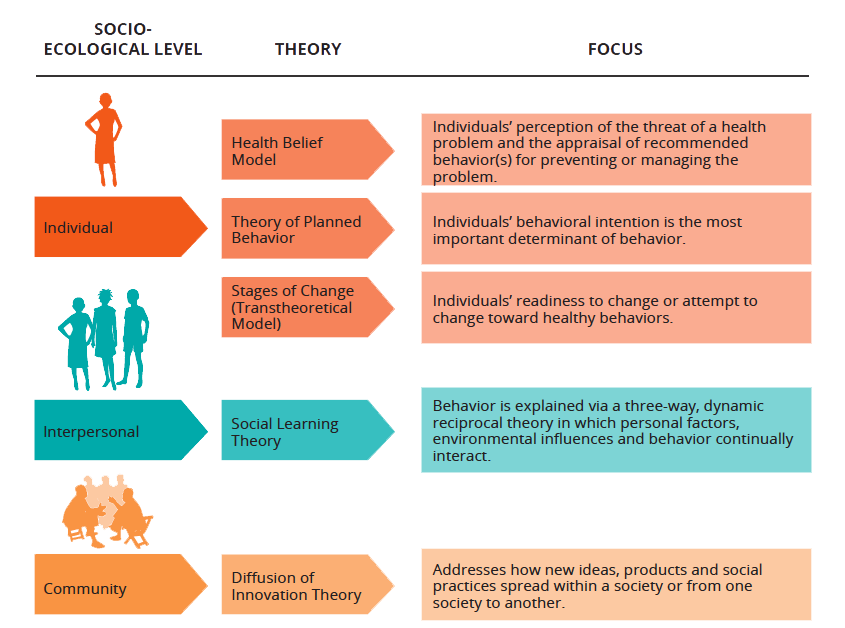Social and Behavior Change Communication Theory
Behavior change theories can help understand why people act the way they do and why behaviors change. SBCC theories can be helpful to guide SBCC program design and help you focus on what or who to address in your program. Each theory or model has a different set of factors to explain behavioral change and area of focus—the individual, their intention to change their behavior or their surrounding environment.
The figure below displays the most commonly used behavior change theories in SBCC programs and identifies the intervention level according to the socio-ecological approach.
You will get a chance apply behavior change theories to your own program when filling in Worksheet #5 in Essential Element 4.
Resources
Not sure which theory to use?
See the Resources section at the end of this section for further information on specific theories. You can also use TheoryPicker, an interactive tool that helps you identify what might be the best behavior change theory for a given program. The tool takes you through a number of steps and asks you questions to help determine which is the best theory or group of theories to use for your program design.
Here is a brief description of some of the most common theories used in SBCC programming. When possible, we will refer to Awa, the young woman from Zanbe, to help illustrate how they can be applied.



